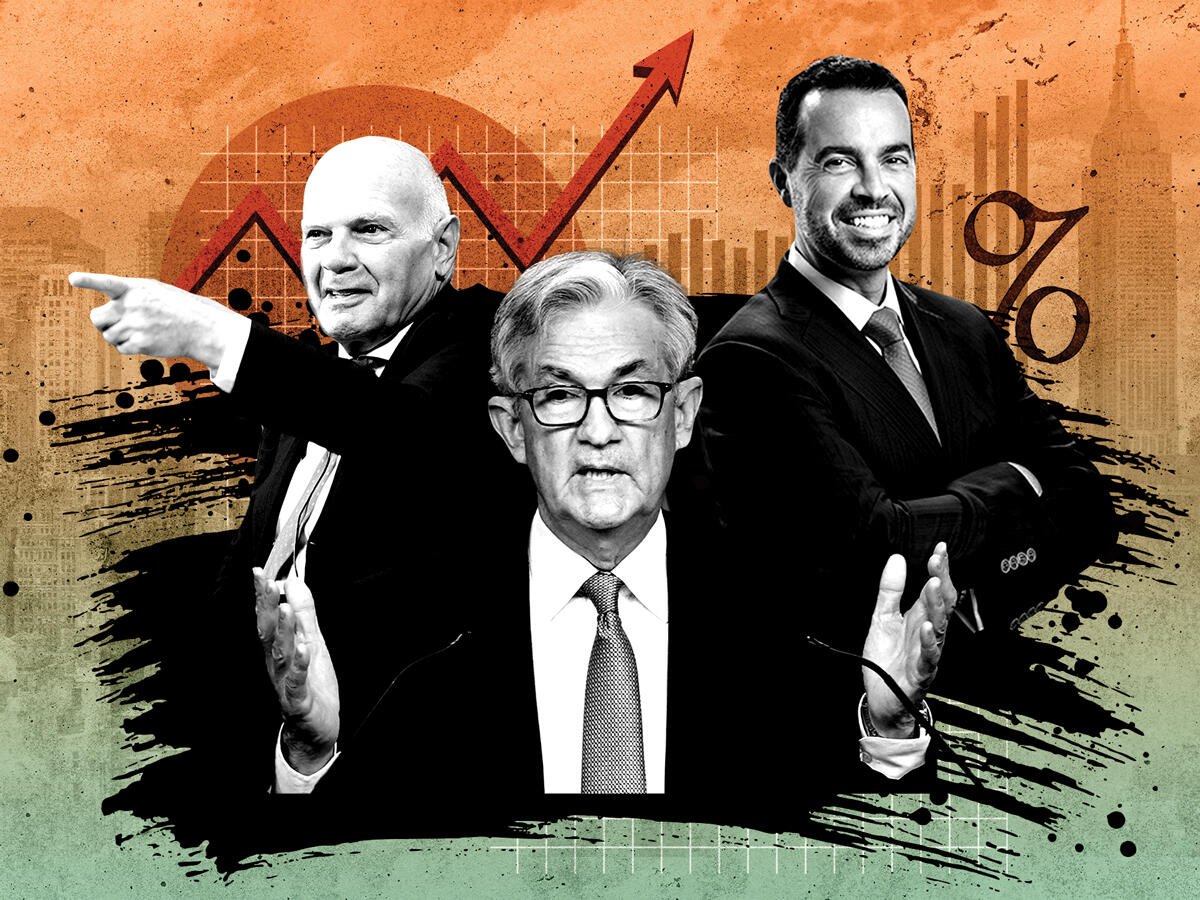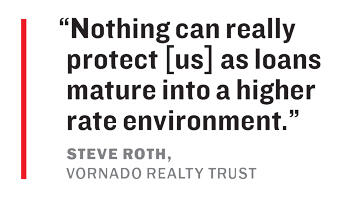Trending
How commercial real estate players use interest rate swaps and caps
The levers big borrowers are pulling to protect their downside

In the months after the Federal Reserve started hiking interest rates, Manhattan’s largest office landlord went out and hedged more than $3 billion of debt to protect against what it sees as the biggest threat to its balance sheet: rising borrowing costs.
“Needless to say, that’s far and away the most we’ve ever done in a year,” said Matthew DiLiberto, CFO at SL Green Realty.
Commercial real estate’s most rate-sensitive borrowers are busy hedging billions of dollars’ worth of debt that threatens to rise with the Fed’s hawkish monetary policy.
But more than eight months into the rate-hike cycle, markets for interest-rate swaps and caps are showing more volatility and complicating efforts to make those bets.
“Generally speaking, swaps that were executed earlier in the year are going to be in the money now,” said Chris Moore of the capital advisory firm Chatham Financial, who added that rates have not been going up in a smooth, predictable fashion. “There’s a great amount of day-over-day volatility.”
Big landlords such as Vornado Realty Trust, Blackstone Group and SL Green started the year with large amounts of variable-rate debt that became a major headache when the Fed declared war on inflation in March and started jacking up interest rates.
The cost of interest-rate caps has grown more than tenfold since the start of the year, and it’s now a significant cost for many players. And with the drumbeat of recession growing louder, a drop in interest rates could turn interest-rate swaps from an asset into a liability.
“If you want to prepay the swap, you have to unwind it, and unwinding is somewhat dependent on where the cost of the swap is at the time,” said Meridian Capital Group’s Morris Betesh.
On any given day, a swap can be either “in or out of the money,” meaning the variable rate a borrower pays is either higher or lower than the fixed rate they receive. If a borrower wants to sell a property with a hedge that’s in the money, they can sell that contract on the secondary market and get paid for it.
But if the swap is out of the money, they have to pay their counterparty to exit the contract. The deeper out of the money, the more it’s going to cost.
 There are investors out there who will speculate in the swaps market, but most real estate executives humbly acknowledge that their goal is simply to mitigate their rate exposure and not to forecast where the swaps market will be in the future.
There are investors out there who will speculate in the swaps market, but most real estate executives humbly acknowledge that their goal is simply to mitigate their rate exposure and not to forecast where the swaps market will be in the future.
“You would think of course rates have to go down because there’s going to be a recession,” said John Gottfried, CFO of Acadia Realty Trust. “I’ve been doing this long enough to know that you can’t beat the market.”
Float your boat
Although not all landlords rely heavily on floating-rate debt — companies such as Prologis and Simon Property Group, which use more corporate-level financing than mortgages, typically have about 10 percent exposure to rates — there are those that prefer using higher levels of flexible debt.
Vornado, for instance, started the year with roughly half of its $8.7 billion in debt floating. Through the first nine months of the year, the company entered into and extended swaps on $2.5 billion worth of financing, bringing its exposure down to 27 percent.
“We aggressively went to protect our floating-rate exposure for multiple different reasons, the most important one of which was to protect against a runaway interest rate environment,” CEO Steve Roth said on the company’s November earnings call.
He did warn, though, that no amount of hedging can completely safeguard the balance sheet.
“Nothing can really protect [us] as loans mature into a higher rate environment,” Roth said.
Others have been working to address high levels of rate exposure.
Blackstone Real Estate Income Trust’s financial disclosures show that its variable-rate exposure actually grew to 62 percent at the end of September from about 54 percent at the beginning of the year. The company entered into $21 billion worth of swaps this year.
A spokesperson for BREIT said the financials don’t capture all of the company’s hedges, saying that 90 percent of the company’s debt is either locked or hedged and that the balance sheet was positioned “for a higher interest-rate environment [with hedges locked in] when rates were materially lower than today’s prevailing rates.”
SL Green has been busy shoring up its balance sheet, prioritizing paying down debt and entering into swaps and caps on more than $3 billion worth of debt this year.
Still, the REIT’s debt expanded this year as it assumed mortgages at 5 Times Square and 245 Park Avenue, the Midtown East trophy tower once valued at $2.2 billion, which SL Green took over through bankruptcy from China’s HNA Group in September.
SL Green’s SEC filings show its rate exposure grew roughly 2 percentage points from the beginning of the year to 25 percent at the end of September.
DiLiberto said that the figures don’t include a $600 million debt reduction executed after the end of the quarter and swaps that take effect next year.
Another factor he believes will help: The interest-rate caps the company purchased will hit their ceilings soon, turning variable-rate debt into fixed-rate debt. Companies are almost always required by lenders to purchase caps on their mortgages, but in the previous decade of low-for-long rates, they rarely came into play.
“It’s been a long time since caps have been hit,” he said.
More broadly, there’s a potential systemic risk as more companies across the economy decide to hedge derivatives.
More than a decade ago, it was the credit-default swaps on mortgage bonds that turned the housing crash into a worldwide financial crisis. Lehman Brothers had hedged its debt with swaps and when the investment bank filed for bankruptcy, its counterparties didn’t have enough cash to cover the swaps.
In the wake of the Great Financial Crisis, regulators required swaps to go through clearinghouses. For now, the biggest risk to individual borrowers is their rate exposure.
Roth, of Vornado, said he expects the Fed to raise rates to put the economy into a recession and then move aggressively to bail it out. But gaming the market isn’t his goal.
“That’s what we expect is going to happen this time,” he said. “But we don’t bet our life on anything.”




